Aaron Bushnell Told Us Why He Self-Immolated—Why Didn’t We Believe Him?
When a dissident’s political act is reduced to a set of personal maladies, his or her message can be all too easily massaged away.
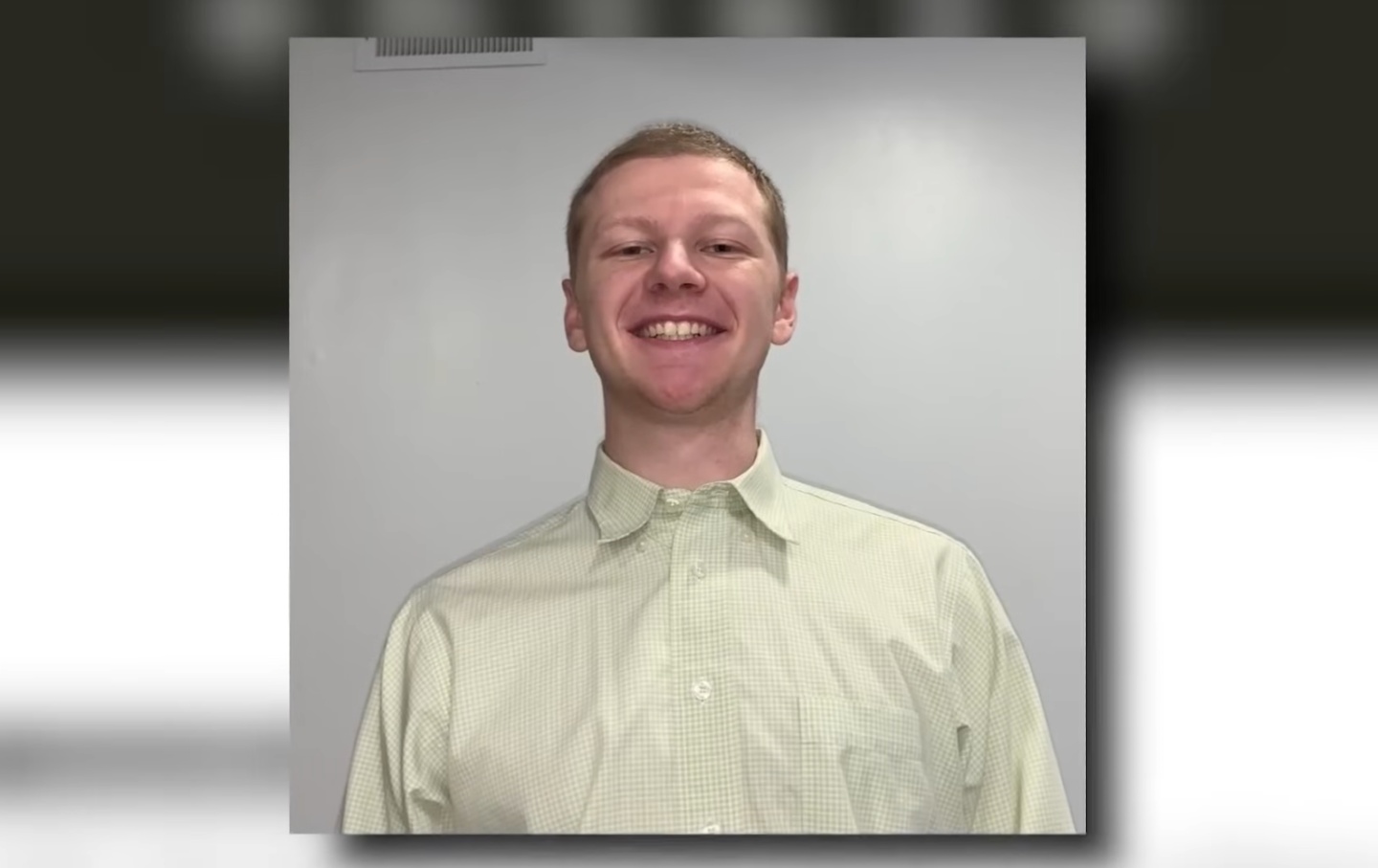
Aaron Bushnell, who died after setting himself ablaze in protest of Israel’s war in Gaza.
(Screenshot via CBS News)
This article originally appeared at TomDispatch.com. To stay on top of important articles like these, sign up to receive the latest updates from TomDispatch.com.
It began with Aaron Bushnell and a visceral response of mine: Why would anyone do such a thing?
Bushnell was the 25-year-old active-duty airman who set himself ablaze on February 25 in front of the Israeli embassy in Washington, DC, to protest that country’s brutal war in Gaza. The first question was tough enough, but his dramatic and deadly action also brought to mind other questions that have occupied my thinking, research, and writing in these last several years: What spurs someone to such an unyielding, ultimate commitment to a cause? What kind of political action is actually effective?
When the campus protests over the bloodbath in Gaza exploded shortly after Bushnell’s act, those questions came to seem even more pressing to me.
And not only was I not alone in my interest in Bushnell’s act, he wasn’t even the first American to self-immolate over the fate of the Palestinians. Last December, an unidentified woman set herself on fire outside the Israeli consulate in Atlanta, apparently in a similar protest. She survived, just barely. (In April, a man who self-immolated across from the courthouse in Manhattan where Donald Trump was on trial for illegally trying to influence the 2016 election seemed aggrieved about other things.)
Three incidents, of course, do not an epidemic make, but they do attract attention. So, the phenomenon of self-immolation stayed in the news for a while.
Bushnell livestreamed his action, which was quickly posted on the social media platform Twitch (though that video was soon taken down there). As of this writing, however, it’s still up at Reddit. It opens on the early afternoon of a clear February day, with Bushnell in combat fatigues walking resolutely toward the Israeli embassy. He had e-mailed some independent news outlets about his protest and, as he walks, he says, “I am an active-duty member of the US Air Force, and I will no longer be complicit in genocide. I’m about to engage in an extreme act of protest but compared to what people have been experiencing in Palestine at the hands of their colonizers, it’s not extreme at all.”
He then props up his cell phone on the pavement, pours some flammable liquid over his head, pulls his cap down, and flicks a lighter on around his ankles. When his uniform doesn’t ignite, he lights the pool of liquid surrounding him. It erupts into flames, which climb his body. Yelling “Free Palestine,” he bucks and moans in what must be unbearable pain before collapsing on the ground. Police and Secret Service agents rush over with fire extinguishers. One points a gun at the crumpled, still-flaming body and yells at him to get on the ground. Off-camera, another responds, “I don’t need guns, I need fire extinguishers!” After the video ends, Bushnell will be loaded into an ambulance and taken to a hospital, where he will soon die. In its only response, it seems, the Israeli embassy will report that none of its staff were injured.
In the following weeks, third-party presidential candidates Cornel West and Jill Stein will express solidarity with Bushnell; vigils honoring him will be held in several American cities, including Portland, Oregon, where members of the anti-war veterans group About Face will burn their uniforms in his memory; the Palestinian town of Jericho will name a street after him; another active-duty airman will be inspired to stage a hunger strike in front of the White House and, when he’s ordered back to his base in Spain, two fellow members of Veterans For Peace will begin a hunger strike in his stead.
Admirable? Unhinged?
The initial media coverage of Bushnell’s action was straightforward enough, though often giving as much space to the history of self-immolation as to the politics of his protest. A notable exception was a Washington Post column by Shadi Hamid, who considered Bushnell’s position on the US government’s support for Israel and concluded that while his act might have been unreasonable, his sense of powerlessness was not.
It didn’t take long, however, for the focus to shift to the psychology of self-immolation, then to Bushnell’s background and the implication that he was distinctly damaged. About six weeks after the event, the Boston Globe ran a feature on the Community of Jesus, a monastic community on Cape Cod, where the young Bushnell was raised and home-schooled. The story relied heavily on disgruntled former members—one characterized it as a cult—who recalled harsh, group-enforced discipline, practices meant to undermine family bonds, humiliations, and verbal assaults. The article did include a disclaimer toward the end – “It’s unclear what, if any, connection Bushnell’s upbringing had on his final protest.” – but all too clear was a striking skepticism about his psychological stability.
The need to understand and explain (or explain away) such an extreme, self-abnegating act is anything but unusual, nor is the linking of self-immolation to mental disturbance. Bushnell was explicit about his distress over the situation in Gaza and it sounded as if he was also dealing with a sense of moral injury, a malady of the heart as much as the head, but none of that was proof of derangement. Setting yourself on fire for whatever reason is inarguably an act of suicide, yet the mental state of someone at that moment is ultimately unknowable since such suicides almost invariably take their secrets to the grave. When it comes to self-immolation, I’m inclined to take people at their word. Apparently, that puts me in the minority.
“I won’t speculate on the dead man’s mental health,” wrote Graeme Wood in a snotty op-ed for The Atlantic. “He grew up in a cult, described himself as an anarchist, and generally eschewed what Buddhists might call ‘the middle way,’ a life of mindful moderation, in favor of extreme spiritual and political practice.” Fanaticism, he suggested, was Bushnell’s “default setting.”
It wasn’t just those who were unsympathetic to Bushnell’s act for whom the state of his psyche took precedence over the purpose of the protest. It may, in fact, be a particular genius of American democracy that it can absorb dissent and, in that way, blunt revolt, but that seemingly benign tolerance can push activists to ever more radical acts in a bid to focus attention on their cause. Sadly enough, though, when a dissident’s striking (even, in Bushnell’s case, ultimate) political act is reduced to a set of personal maladies, his or her message can be all too easily massaged away.
Probably More Than You Want to Know About Self-Immolation
Self-immolation is a low-cost, low-tech, readily documentable act that’s easy to do without significant planning, assistance, or much forethought. Of course, “easy” might be the wrong word for it, and self-immolation is an exceedingly rare, singular, and extreme form of political protest. Unlike marches or strikes, it involves only one person. Unlike suicide missions, the harm is intended to be inflicted only on yourself. Unlike the slow, wasting away of a hunger strike, it’s seldom reversible and usually fatal. Unlike most public protest, it doesn’t rely on an authority’s response to have an effect. And while most people wouldn’t consider it an option, to those who would set themselves aflame, sooner or later it becomes the only option.
Self-immolation is also heart-stoppingly dramatic, capturing the public’s attention, emotions, and imagination despite, or maybe because of its inherent contradictions. It is at once an act of despair and of defiance, of purity and of bravado. Above all, it defies any idea of acceptable risk. Moreover, as a form of nonviolent protest, it’s shockingly violent, and though our normal urge as humans is to look away from such suffering, the image remains irrepressible.
As it happens, self-immolation as protest has an ancient history. It appears in Hindu tales, Greco-Roman myths, the early Christian era, fourth-century China, and 17th-century Russia. It’s happened in protests against America’s war in Vietnam; against the Soviet, Indian, and Sri Lankan governments, as well as Chinese policies in Tibet; and recently in the United States over climate change.
According to Michael Biggs, a sociologist who conducted an extensive study of the subject, the motivations and rationales of self-immolators range from the selfless and strategic to the psychological and egocentric. Such an array of reasons is on display in The Self-Immolators, testimony compiled from protesters around the world who set themselves on fire between 1963 and 2013. It makes for sad reading: so many lives, so much anguish, so little effect.
Historically, the effectiveness of such awe-inspiring protest is, at best, unclear. There were certainly cases that did gain widespread attention and so influenced events and policies. As a threesome, consider Thich Quang Duc, the Vietnamese monk in the iconic photograph, who self-immolated to protest his government’s mistreatment of Buddhists; Norman Morrison, the American Quaker who self-immolated under then–Defense Secretary Robert McNamara’s Pentagon window to protest America’s war in Vietnam (McNamara was reportedly “horrified,” while President John F. Kennedy exclaimed, “Jesus Christ!”); and Mohamed Bouazizi, the street vendor in Tunisia, whose self-immolation protesting corruption was considered a catalyst for the Arab Spring uprising.
Sadly, however, Bushnell’s action, far more typically, didn’t make a dent in Israel’s belligerence or limit the weaponry and intelligence his country still sends Israel. And the shock of the act, of the image of him burning to death seemed, if anything, to blot out the purpose. Maybe witnessing someone dying in flames, even online, is simply too disturbing to let witnesses easily absorb its intended message. Or maybe the intensity of Bushnell’s moral obligation shamed those who agreed with him and did nothing for those who didn’t.
Too Bad for Words
While it’s hardly burning yourself to death, all those students who camped out last spring, erecting tents on university lawns, defying administrators, and dominating the news narrative for weeks, also faced risks. Though no student protestors died, by demanding institutional responses to Israel’s war in Gaza, some were barred from graduating, denied job offers, summarily kicked out of their housing, physically attacked, and arrested.
And then, as with Aaron Bushnell, we changed the subject. The issue wasn’t this country’s, or any individual university’s role in the war in Gaza—so insisted school authorities, opportunistic politicians, and an obliging media—but free speech and the function of higher education.
Popular
“swipe left below to view more authors”Swipe →In contrast to self-immolation, which is always about the image, language was all-important in those campus protests and became a minefield. The hotly debated meaning of terms and slogans, the name-calling that stopped discussion, the debate over who controlled the debate, the mutual misunderstandings, and the alarming tolerance of intolerance were all exacerbated in the self-enclosed, pressure-cooker communities that college campuses generally are.
Quickly, the “sides” were slotted into pro-Israeli and pro-Palestinian categories, flattening any nuance among the protesters, even though a range of sentiments, perspectives, demands, and goals were apparent. That reduction also undermined the prospect for critical analysis, any true exchange of views, or the possibility of minds being changed—everything, in other words, that’s supposed to underpin a liberal education. And whatever happened to the idea of being pro-peace? I don’t remember that label ever being applied to the protests, although the one area most protestors agreed on was the need for a cease-fire in Gaza.
In his keynote speech at MIT’s graduation, entrepreneur Noubar Afeyan acknowledged the students’ pain over the tragic Israeli-Palestinian conflict and rued his own lack of answers on the subject, concluding, “But I do know this: having conviction should not be confused with having all the answers.”
I have a certain sympathy for that sentiment, though I doubt I did when I was a student with my own set of demands over a different tragic conflict, which leaves me sympathetic to the student activists, too. After all, you don’t need answers to pinpoint a problem accurately or to believe peace is a precondition for finding such answers. Protest isn’t supposed to be nice. Dissent courts the heterodox. The point of a political action is to get in people’s faces, disturb complacency, and command a response. Protest that doesn’t challenge our norms, or at least get people to think about other possibilities, is just spectacle.
Of course, dissent also threatens authority, and the kneejerk reaction of authorities fearing that they’re losing control is to try to take ever more control. Insisting that the students and their organizations were being punished not for their speech but for breaking the rules, university administrators suspended anti-Zionist groups, breached principles of academic freedom, opened the way for violence by ushering the police onto campus, and caved to financial pressure from donors and alumni. And what to make of the suggestion of a Harvard dean, who, “look[ing] forward to calmer times on campus,” argued that the solution was for faculty members to just shut up?
You’d think such beleaguered university administrators would learn. Clampdowns usually backfire and severe punishments hardly make for calmer campuses. The repression, in fact, succeeded mainly in turning the conversation from core issues like war and human rights to an assessment of free speech and the very nature of academia—not to mention good old American anti-intellectualism. Educational leaders were called before Congress to confess; university presidents were fired; hate speech codes, mostly moribund in this century, got renewed attention; and the crisis became focused on campuses riven by incivility and bad words.
Dissension at educational institutions over what kinds of expression are acceptable, no less desirable, has a long history and merits periodic revisiting. I suspect, though, that there’s another reason what we say has bested what we do as the issue du jour: That is, a lot of Americans find it easier to champion the idea of free speech than to demand that Israel get out of Gaza or that the Biden administration rethink its military aid policies.
About 20 years ago, when I wrote a book about free expression controversies, I saw repeatedly how words make convenient scapegoats. Arguments over language are often a way to avoid arguments we’d prefer not to have, even if working through those very arguments could produce the resolutions we want to reach. As paramount as free speech is to me in the pantheon of human rights, I wish in this case—and in Aaron Bushnell’s memory—we hadn’t relegated war to just a background hum but had assessed the validity of the protesters’ demands and dealt with them, as fraught and frightening, involved and painful as that process would inevitably have been.
Disobey authoritarians, support The Nation
Over the past year you’ve read Nation writers like Elie Mystal, Kaveh Akbar, John Nichols, Joan Walsh, Bryce Covert, Dave Zirin, Jeet Heer, Michael T. Klare, Katha Pollitt, Amy Littlefield, Gregg Gonsalves, and Sasha Abramsky take on the Trump family’s corruption, set the record straight about Robert F. Kennedy Jr.’s catastrophic Make America Healthy Again movement, survey the fallout and human cost of the DOGE wrecking ball, anticipate the Supreme Court’s dangerous antidemocratic rulings, and amplify successful tactics of resistance on the streets and in Congress.
We publish these stories because when members of our communities are being abducted, household debt is climbing, and AI data centers are causing water and electricity shortages, we have a duty as journalists to do all we can to inform the public.
In 2026, our aim is to do more than ever before—but we need your support to make that happen.
Through December 31, a generous donor will match all donations up to $75,000. That means that your contribution will be doubled, dollar for dollar. If we hit the full match, we’ll be starting 2026 with $150,000 to invest in the stories that impact real people’s lives—the kinds of stories that billionaire-owned, corporate-backed outlets aren’t covering.
With your support, our team will publish major stories that the president and his allies won’t want you to read. We’ll cover the emerging military-tech industrial complex and matters of war, peace, and surveillance, as well as the affordability crisis, hunger, housing, healthcare, the environment, attacks on reproductive rights, and much more. At the same time, we’ll imagine alternatives to Trumpian rule and uplift efforts to create a better world, here and now.
While your gift has twice the impact, I’m asking you to support The Nation with a donation today. You’ll empower the journalists, editors, and fact-checkers best equipped to hold this authoritarian administration to account.
I hope you won’t miss this moment—donate to The Nation today.
Onward,
Katrina vanden Heuvel
Editor and publisher, The Nation
More from The Nation
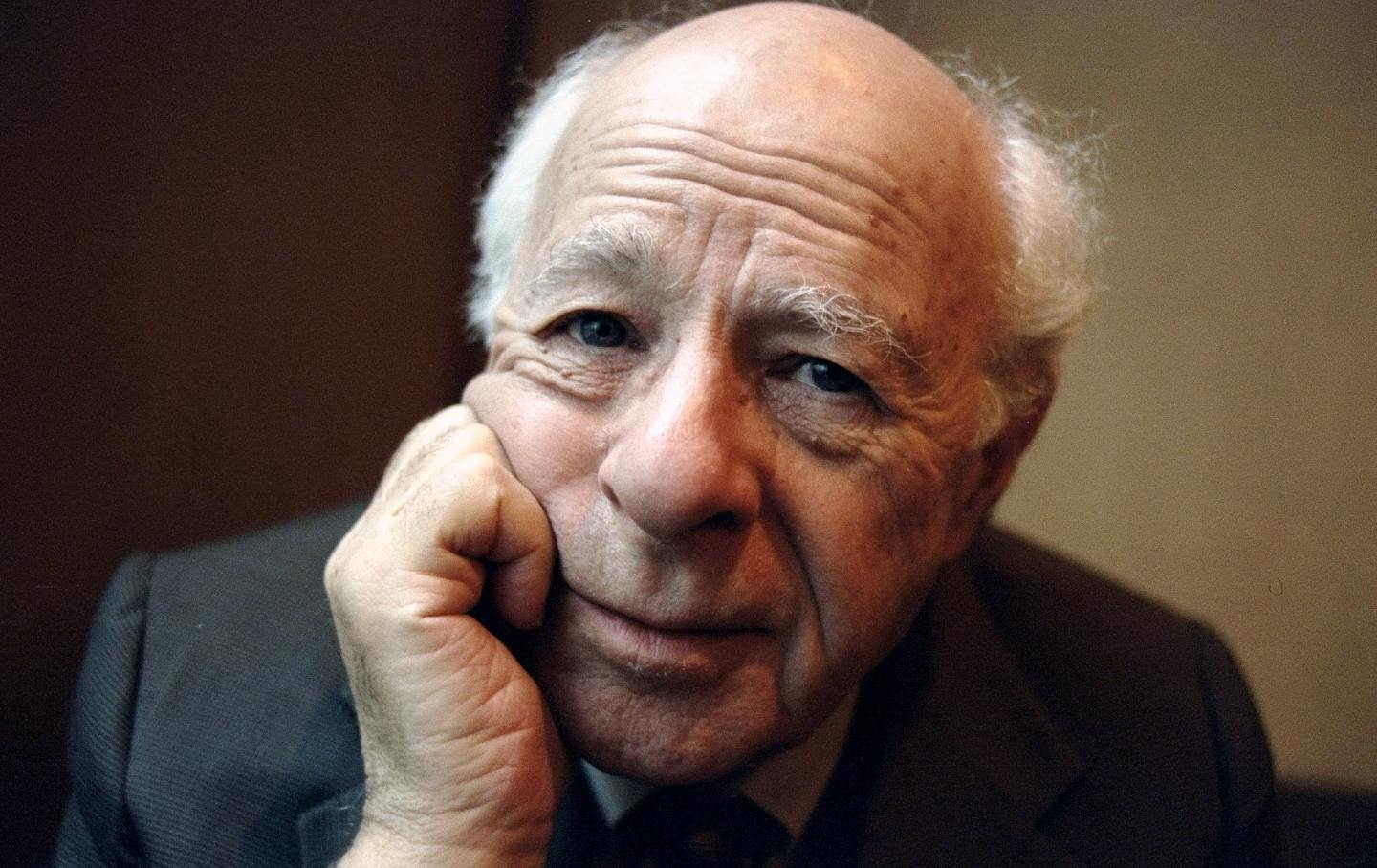
The Longest Journey Is Over The Longest Journey Is Over
With the death of Norman Podhoretz at 95, the transition from New York’s intellectual golden age to the age of grievance and provocation is complete.
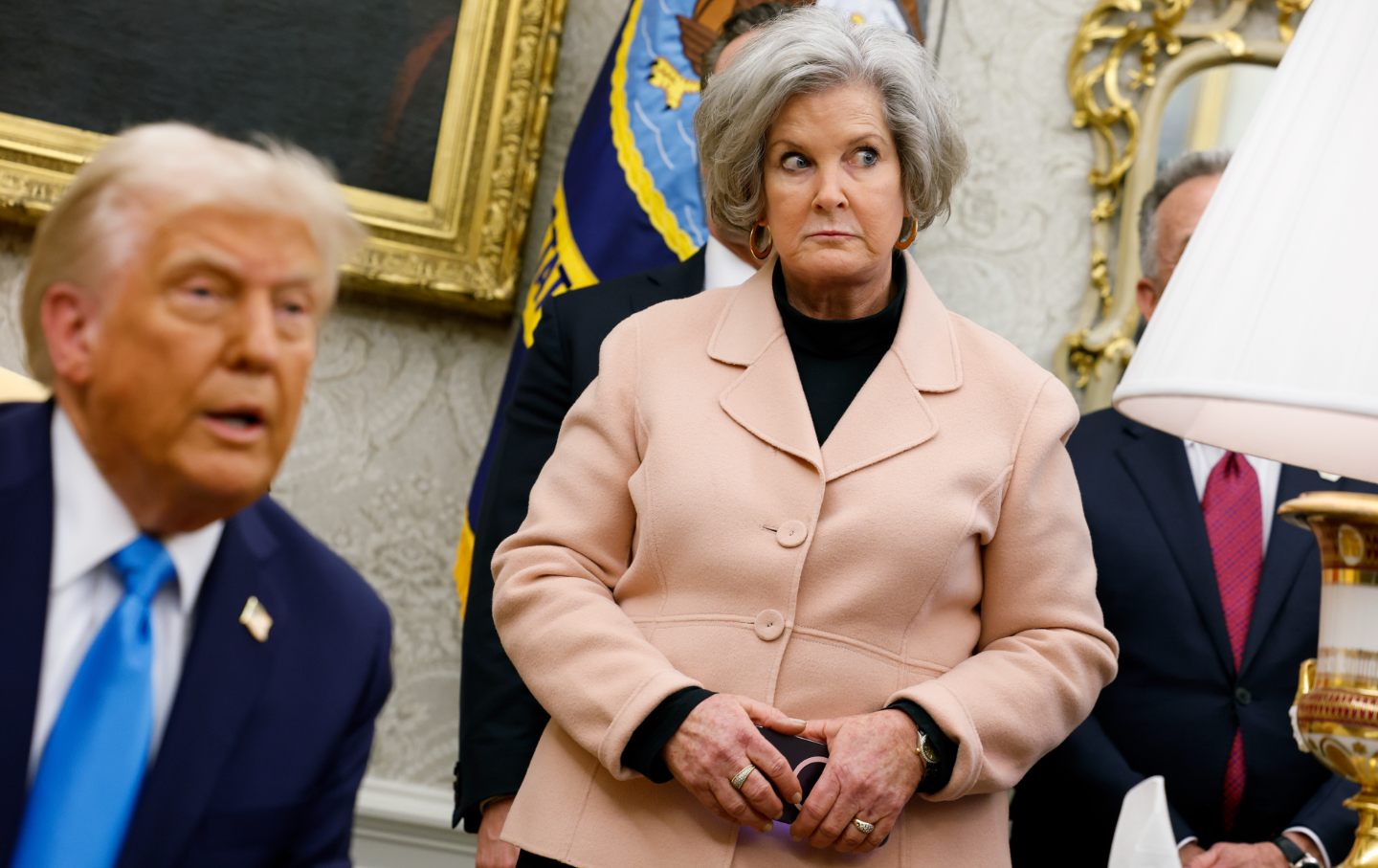
The Shocking Confessions of Susie Wiles The Shocking Confessions of Susie Wiles
Trump’s chief of staff admits he’s lying about Venezuela—and a lot of other things.

The King of Deportations The King of Deportations
ICE’s illegal tactics and extreme force put immigrants in danger.
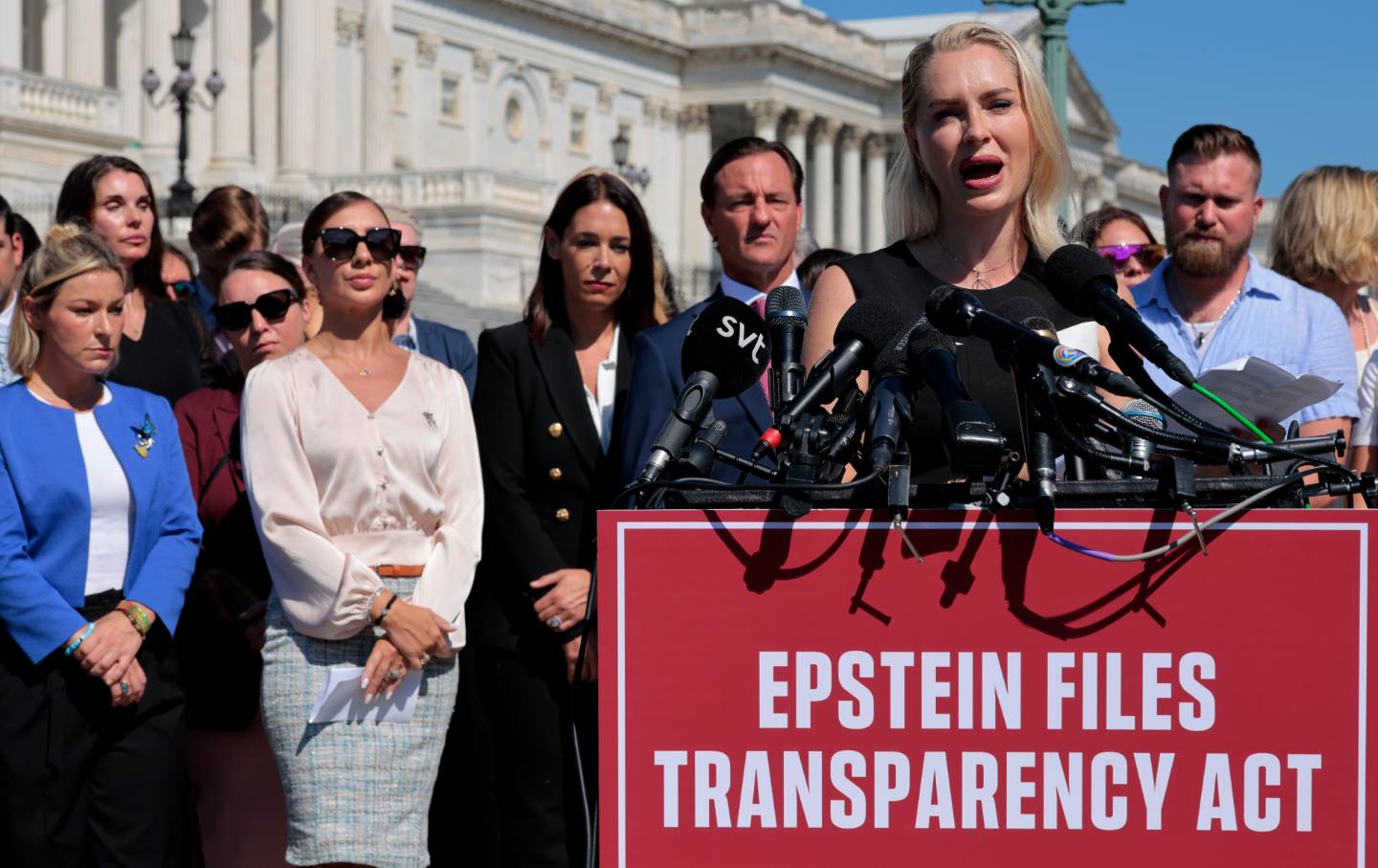
The Epstein Survivors Are Demanding Accountability Now The Epstein Survivors Are Demanding Accountability Now
The passage of the Epstein Files Transparency Act is a big step—but its champions are keeping the pressure on.
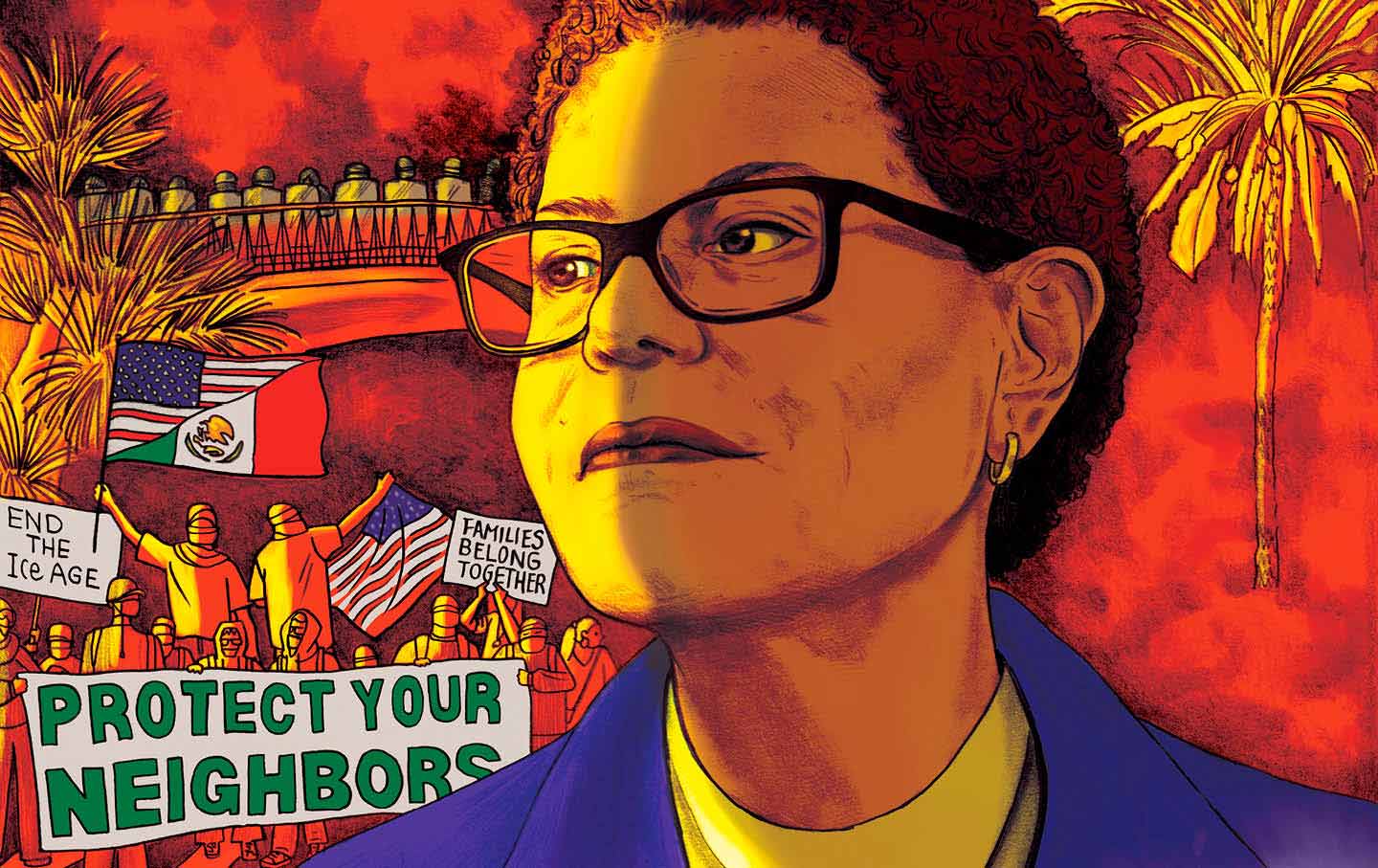
Mayor of LA to America: “Beware!” Mayor of LA to America: “Beware!”
Trump has made Los Angeles a testing ground for military intervention on our streets. Mayor Karen Bass says her city has become an example for how to fight back.

Breaking the LAPD’s Choke Hold Breaking the LAPD’s Choke Hold
How the late-20th-century battles over race and policing in Los Angeles foreshadowed the Trump era.


